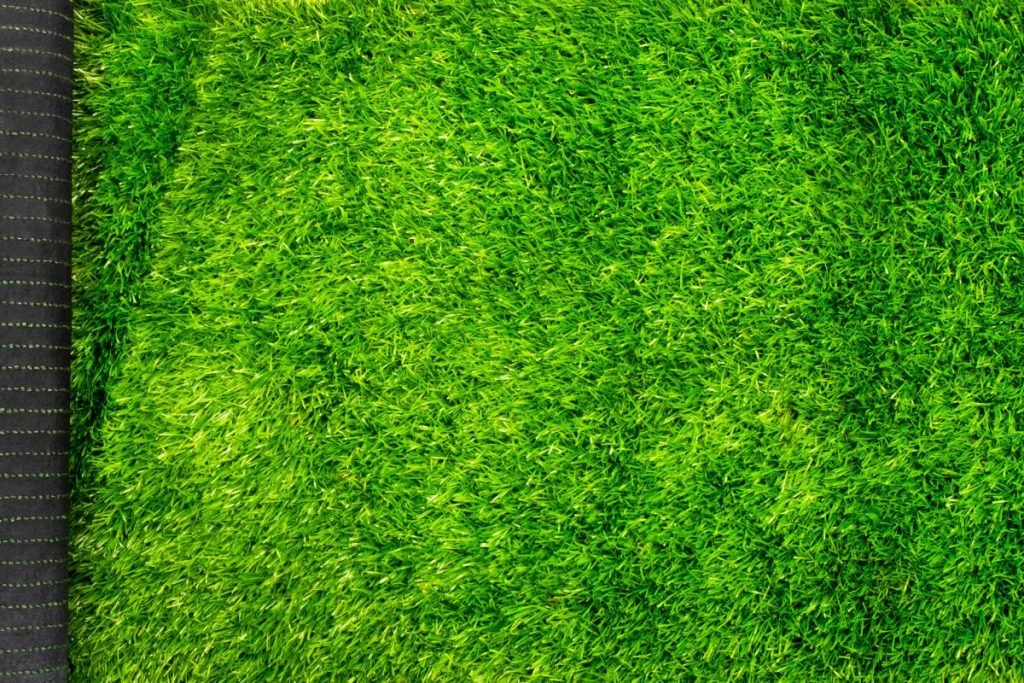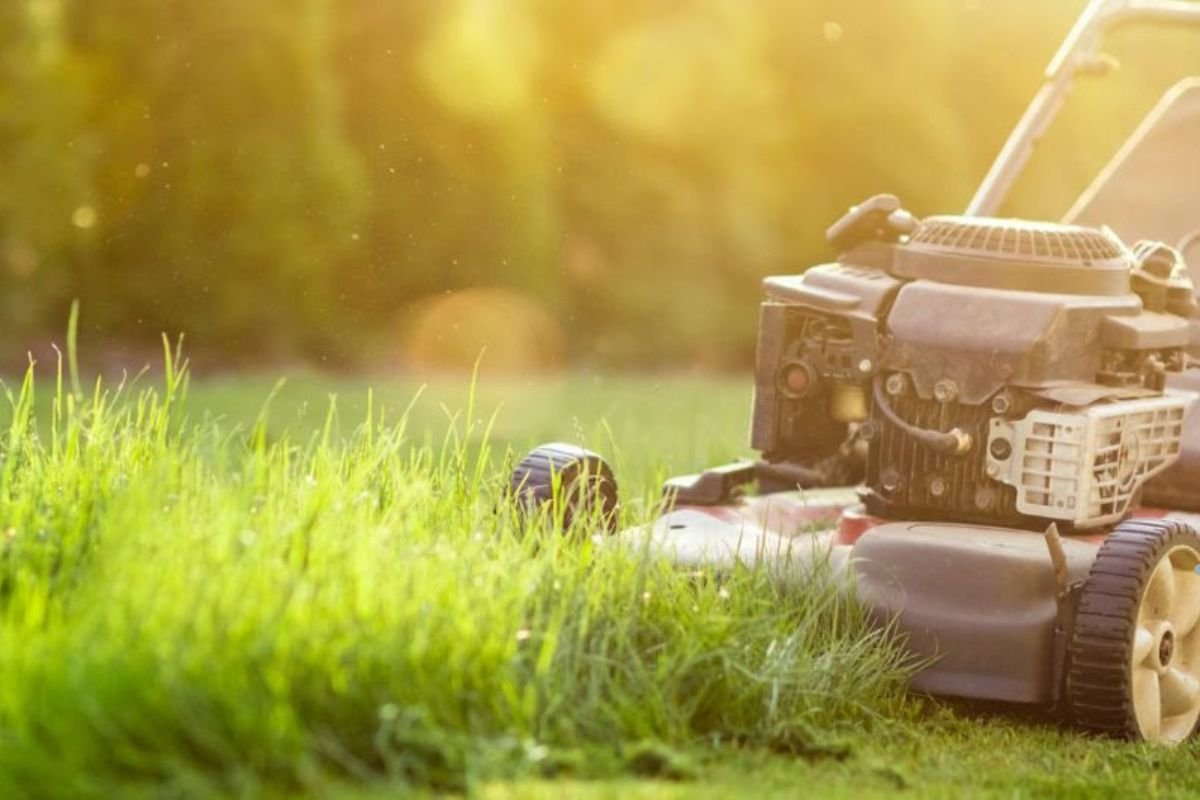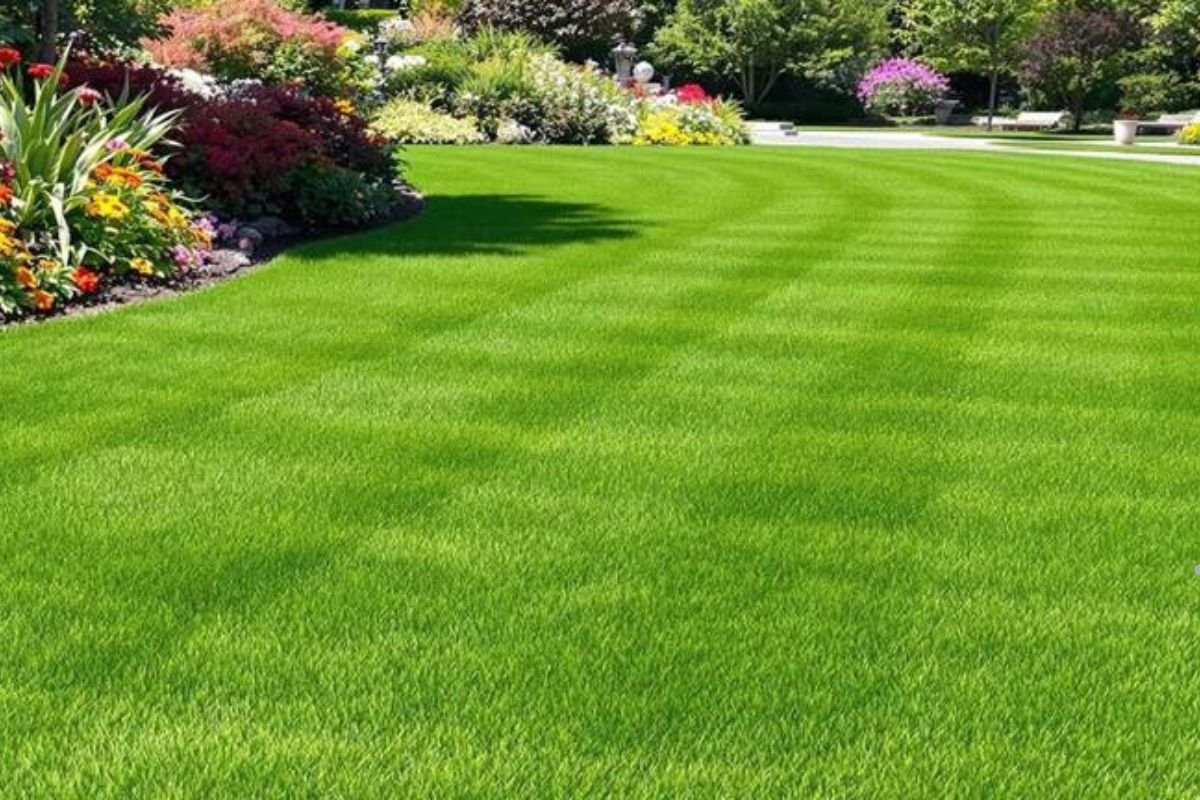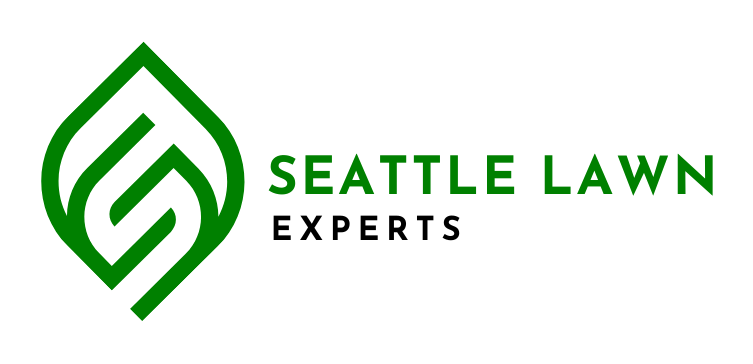
Synthetic turf is a game-changer for anyone wanting a green, low-maintenance lawn without the hassle of watering, mowing, or fertilizing. But with so many options out there, it can be a bit overwhelming to figure out what works best for your yard. Whether you’re looking for something durable for the kids and pets or just want a lush, picture-perfect lawn, choosing the right synthetic turf comes down to understanding your specific needs and the features that matter most.
Key Takeaways
- Think about how you’ll use the turf—play areas, pets, or just for looks.
- Consider your local climate and pick turf that suits hot, rainy, or shady conditions.
- Pay attention to features like pile height, drainage, and realistic textures.
- Avoid mistakes like poor base prep or picking a turf that doesn’t match your needs.
- Test samples before buying to ensure it looks and feels right for your space.
Looking to keep your lawn healthy and vibrant? Our Lawn Treatment Services are the perfect solution for maintaining a lush, green yard all year round.
Understanding the Basics of Synthetic Turf

What Is Synthetic Turf and How Does It Work?
Synthetic turf is a man-made surface designed to replicate the look and feel of natural grass. It’s usually made of plastic-based fibers like polyethylene, polypropylene, or nylon, which are attached to a sturdy backing. These fibers, often called “blades,” are crafted to stand upright and mimic the appearance of real grass. What makes it special is its low-maintenance nature—you don’t need to water, mow, or fertilize it like you would with a natural lawn. Plus, it’s designed to handle heavy use, whether it’s for your backyard, a sports field, or a playground.
The Evolution of Synthetic Turf Technology
In the early days, synthetic turf was stiff, shiny, and far from realistic. Back in the 1960s, AstroTurf was one of the first options, mostly used in sports arenas. Over time, though, the technology has come a long way. Modern synthetic turf now features UV-resistant coatings to prevent fading, softer fibers for a more natural feel, and improved drainage systems. Some turfs even include multi-tone blades and “thatch layers” to make them look incredibly lifelike. Whether it’s for landscaping or sports, today’s synthetic turf is a huge leap from its early versions.
Key Benefits of Choosing Synthetic Turf
Switching to synthetic turf offers a bunch of perks:
- Water Conservation: It doesn’t need watering, which is a big deal in drought-prone areas.
- Durability: Designed to withstand foot traffic, weather, and even pets.
- Low Maintenance: No mowing, no fertilizing, no reseeding—just a quick rinse now and then.
- Year-Round Greenery: Unlike natural grass, it stays lush and vibrant no matter the season.
Synthetic turf is a game-changer for anyone looking for a hassle-free, eco-friendly alternative to traditional lawns. It’s more than just fake grass; it’s a practical solution for modern landscaping needs.
For those interested in exploring more about synthetic surfaces, artificial turf offers a durable and visually appealing option for various applications.
Discover the perfect synthetic turf for your yard, tailored to your needs—from durability for kids and pets to a lush, low-maintenance lawn. Call us now to find the ideal turf solution for your outdoor space!
Identifying Your Lawn’s Specific Needs
Determining Usage: Play Areas, Pets, or Aesthetics
Before you pick a synthetic turf, ask yourself how the space will be used. If it’s a playground for kids, you’ll want something durable and safe. Shorter pile heights (around 1-1.5 inches) are perfect for these high-traffic areas because they’re easier to maintain. For pet owners, look for turf with excellent drainage and antimicrobial properties to manage accidents and odors. On the other hand, if your main goal is to create a visually stunning lawn, consider longer pile heights and a higher face weight for that lush, natural look.
Considering Traffic Levels and Durability
Think about how much foot traffic your lawn will endure. For areas that see constant activity—like pathways, play zones, or spots where your dog loves to run—durability is key. Opt for turf with a dense blade structure and shorter pile height to withstand wear and tear. For quieter spots, like a decorative garden corner, you can prioritize appearance over toughness.
Balancing Appearance with Functionality
Striking the right balance between how your turf looks and how it performs is crucial. A thicker, fuller turf might look amazing but could require more upkeep. If you’re torn between options, test samples to see what feels and looks best for your needs. Remember, synthetic turf isn’t one-size-fits-all—it’s about finding what works for your space and lifestyle.
Evaluating Climate and Environmental Factors
Choosing Turf for Hot and Sunny Climates
If you live somewhere with scorching summers, you’ll want to think carefully about how your synthetic turf holds up in the heat. Artificial turf can reach temperatures of 150°F or more, which is significantly hotter than natural grass or even asphalt. To combat this, look for turf made with heat-resistant materials like nylon. Nylon-based turf handles direct sunlight and reflective heat from windows better than other options. Some manufacturers also offer cooling infill systems that help lower surface temperatures—definitely worth considering if you plan to spend time barefoot on your lawn.
Selecting Turf for Rainy or Humid Areas
For wetter climates, drainage should be your top concern. A good drainage system prevents water from pooling, reducing the risk of mold or mildew. Look for turf with perforated backing that allows water to flow through quickly. Some options even include antimicrobial treatments to keep things fresh and prevent odors. Also, check the pile height and density—shorter blades and tighter weaves tend to dry faster, making them a smart pick for damp conditions.
Eco-Friendly Features of Synthetic Turf
Synthetic turf is often touted as an eco-friendly alternative to natural grass, but it’s not without its debates. On the plus side, it requires no watering, saving thousands of gallons of water annually. You’ll also skip the need for pesticides and fertilizers, which can pollute local water sources. Some modern turf products are even recyclable, reducing landfill waste. However, keep in mind that turf isn’t biodegradable, and older products often end up in landfills. If sustainability is a priority, look for brands that use recycled materials or offer take-back programs for old turf.
Before installing your new synthetic turf, make sure your yard is in top shape with our professional Yard Clean Up Services.
Key Features to Look for in Synthetic Turf
Understanding Pile Height and Face Weight
When picking synthetic turf, two terms you’ll hear a lot are pile height and face weight. Pile height is just the length of the grass blades. Shorter blades are tougher and easier to clean, so they’re great for areas that get a lot of use, like dog runs or playgrounds. On the other hand, longer blades give off that lush, natural vibe, making them perfect for front lawns or decorative spaces. Face weight, meanwhile, measures how dense the fibers are. A higher face weight means the turf feels fuller and thicker, but it’s also heavier. For most backyards, a face weight of 60–80 ounces strikes a good balance between durability and appearance.
Realistic Blade Colors and Textures
Gone are the days when fake grass looked like a green plastic mat. Modern synthetic turf comes in a mix of shades and textures that mimic real grass. Look for blades that aren’t all the same color—adding a bit of brown or olive tones can make it look way more realistic. Some products even have a mix of blade shapes and thicknesses to better imitate natural grass. If you’re aiming for a lawn that makes people do a double-take, this is something to keep in mind.
Drainage and Maintenance Requirements
Nobody wants a soggy lawn after a rainstorm. That’s why drainage is a big deal. Quality turf should have a solid drainage system to ensure water doesn’t pool. This is especially important if you live in a rainy area. Also, think about how much time you want to spend on upkeep. Synthetic turf doesn’t need mowing or watering, but it still requires occasional brushing to keep the blades upright and debris-free. Some options even have built-in antimicrobial properties to make cleaning up after pets a breeze.
A well-chosen synthetic turf can transform your yard into a low-maintenance, year-round green space that looks good and holds up under everyday use.
Selecting artificial grass for your space involves balancing these features against how you plan to use it. Whether it’s for high-traffic areas or just to boost curb appeal, understanding these key factors will help you make the best choice.
Avoiding Common Mistakes When Choosing Synthetic Turf
The Importance of Proper Base Preparation
A solid foundation is everything when it comes to synthetic turf. Skipping proper base prep can lead to uneven surfaces, poor drainage, or even turf shifting over time. Think of the base as the backbone of your lawn—get it right, and the rest will follow. Here’s what you need to focus on:
- Remove all existing grass and debris to create a clean slate.
- Use a layer of compacted gravel or crushed stone to promote drainage.
- Double-check that the surface is level to avoid bumps or dips.
Taking the time to prepare the base correctly will save you headaches (and money) in the long run.
Avoiding Visible Seams During Installation
Nothing ruins the look of synthetic turf like obvious seams. This is one of the trickiest parts of installation, but it’s also where attention to detail matters most. To minimize visible seams:
- Align the turf pieces so the blades face the same direction.
- Use high-quality seam tape and adhesive for a secure bond.
- Apply pressure to the seams during installation to keep them flat.
If you’re unsure about doing this yourself, hiring a professional can make all the difference.
Selecting the Right Turf for Your Needs
Not all synthetic turf is created equal, and choosing the wrong type can lead to disappointment. Before you buy, ask yourself:
- Will it be used by pets? Opt for turf with odor-resistant backing.
- Is it for a high-traffic area? Go for shorter, denser blades.
- Are aesthetics your main concern? Choose turf with longer, softer blades for a lush appearance.
Pro tip: Always test samples before committing to ensure the turf feels and looks right for your space.
Looking for the perfect synthetic turf or lawn care solution? Our experts are here to help you choose the right product for your needs. Call us now to get personalized advice and create the beautiful, low-maintenance yard you’ve always wanted!
Installation and Maintenance Tips for Synthetic Turf

Why Professional Installation Matters
When it comes to synthetic turf, professional installation can make all the difference. A trained installer knows how to prepare the ground properly, ensuring the turf doesn’t shift or develop bulges over time. They’ll also handle tricky details like seams and edges with precision, so your lawn looks seamless and natural. While DIY might seem tempting, mistakes like inadequate base preparation or improper drainage can lead to costly fixes later. If you want your synthetic lawn to last, hiring a pro is definitely worth considering.
Simple Maintenance Practices for Longevity
Maintaining synthetic turf is a breeze compared to natural grass, but there are still a few things you should do to keep it looking great:
- Brush the fibers regularly to prevent matting, especially in high-traffic areas.
- Rinse the turf occasionally to remove dirt, dust, and pet waste. A garden hose works perfectly for this.
- Remove debris like leaves or sticks quickly to avoid buildup or decay.
For stains, blot spills immediately and rinse with water. For tougher spots, a mild detergent can help. Staying on top of these tasks will keep your lawn clean and fresh for years.
Testing Samples Before Making a Purchase
Before committing to a specific turf, always test samples. Feel the texture, check the color under different lighting, and even walk on it barefoot. If you have pets, let them interact with the sample to see how it holds up. This hands-on approach ensures you pick a turf that meets your expectations in both look and feel. Don’t skip this step—it’s your chance to avoid buyer’s remorse and get a lawn you’ll love.
Wrapping It Up
Picking the right synthetic turf for your lawn doesn’t have to be overwhelming. It’s all about figuring out what you need—whether it’s a kid-friendly play area, a pet-proof yard, or just a low-maintenance green space. Think about how you’ll use it, the climate you live in, and the look you’re going for. And don’t forget, proper installation and maintenance make all the difference in how long it lasts and how good it looks. Take your time, compare options, and maybe even get some samples to test out. In the end, the right turf can give you that lush, hassle-free lawn you’ve been dreaming of.
Frequently Asked Questions
What is synthetic turf made of?
Synthetic turf is made from synthetic fibers, usually polyethylene or polypropylene, designed to look and feel like natural grass. It also includes a backing material and infill, which provides cushioning and support.
How do I choose the right synthetic turf for my needs?
Decide based on how you’ll use the space. For high-traffic areas like playgrounds, choose turf with shorter blades and higher density. If aesthetics are your priority, opt for longer blades and a lush texture. Pet owners should prioritize good drainage and antimicrobial features.
Is synthetic turf eco-friendly?
Yes, synthetic turf can be eco-friendly. It reduces water usage, eliminates the need for fertilizers and pesticides, and requires no mowing. However, it’s made from non-biodegradable materials, so recycling options should be considered.
Does synthetic turf get hot in the sun?
Yes, synthetic turf can get warm under direct sunlight. However, some options come with cooling technology to reduce heat buildup, making them more comfortable in hot climates.
How long does synthetic turf last?
High-quality synthetic turf can last between 10 to 20 years, depending on usage and maintenance. Proper installation and regular care can extend its lifespan.
What maintenance does synthetic turf require?
Synthetic turf requires minimal maintenance. You’ll need to occasionally rinse it to remove dust and debris, brush the blades to keep them upright, and check for any damage or wear over time.
Seattle Lawn Experts offers expert lawn care, landscaping, and maintenance services throughout Seattle, WA. From treatments and pest control to irrigation and snow removal, contact us today for personalized, reliable solutions to enhance your outdoor spaces!
